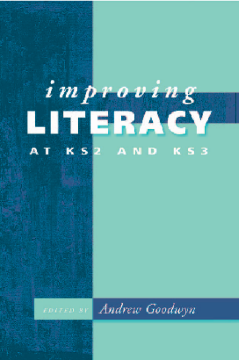
Additional Information
Book Details
Abstract
' Improving Literacy at KS2 and KS3 is all about primary-secondary transfer, seen mostly through the eyes of secondary teachers, but with some interesting contributions from middle-school staff who know the territory well. This book sees the NLS's influence on primary practice as generally benign, but takes a more jaundiced view of the implications for secondary teaching, especially in its central chapter -Evidence from experienced practitioners-. There are, however, many useful suggestions for reshaping and adapting parts of the strategy, including chapters on classroom literacy and everyday life and literacy and drama which consider ways of relating learning to the wider culture beyond school, including screen-based literacy. There is also a review of the language-across-the-curriculum movement and a chapter on subject literacies which has left me with an abiding admiration for geography teachers as lone voices of dissent' - Sue Palmer, TES Teacher
Table of Contents
| Section Title | Page | Action | Price |
|---|---|---|---|
| INTRODUCTION viii | |||
| 1 Traditional post-harvest system 1 | |||
| Harvesting 1 | |||
| Threshing and winnowing 1 | |||
| Drying 2 | |||
| Storage 2 | |||
| Primary processing methods 3 | |||
| 2 Improved processes and technologies 5 | |||
| Harvesting 6 | |||
| Threshing 6 | |||
| Winnowing 8 | |||
| Maize shelling 8 | |||
| Drying 9 | |||
| Storage 10 | |||
| Milling, grinding and hulling 11 | |||
| Economic considerations 16 | |||
| 3 Secondary processing - cereal based foods 17 | |||
| 4 Case studies 19 | |||
| 5 Checklist for project planning 40 | |||
| 6 Tools and equipment 43 | |||
| REFERENCES 51 | |||
| FURTHER READING 52 | |||
| CONTACTS 53 |
